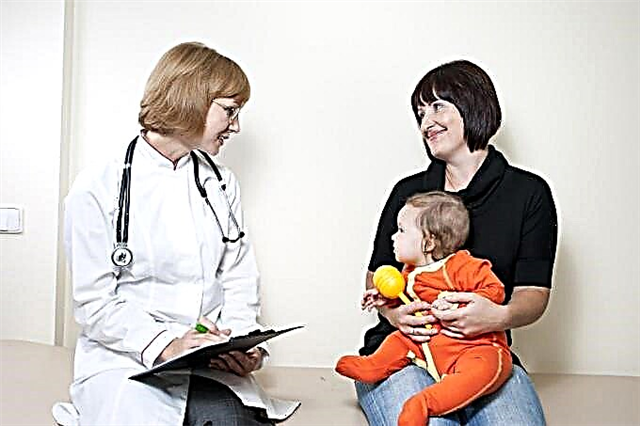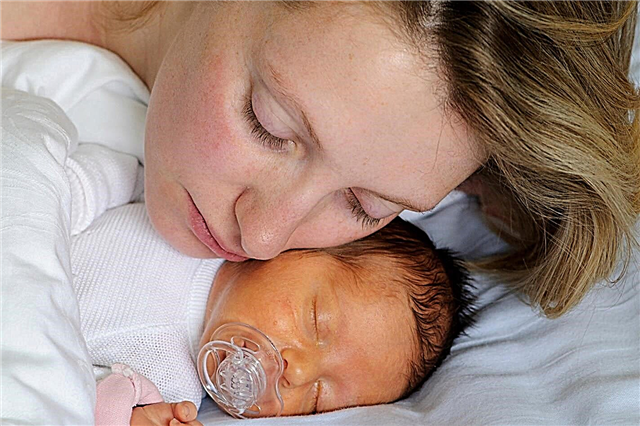Green diarrhea in a child is not just an indicator of the malfunctioning of the digestive system, but of the whole organism as a whole. Finding that the baby's feces have acquired a greenish tint, you should be alert. The cause of the disorder may not be significant, but sometimes such diarrhea is one of the symptoms of a serious pathology.

Diarrhea in a baby is a problem that almost every parents face
Causes of green feces
All the prerequisites for the appearance of green liquid stool in a child can be divided into two large categories: dangerous and non-dangerous.
Reasons that should not cause concern on the part of parents include the following:
- meconium (a feature of the functioning of the stomach of newborns in the first decade of life leads to the fact that the stool has a dark olive tint and a liquid consistency);
- breastfeeding (liquid greenish feces may be due to the absorption of low-fat anterior breast milk by the baby);
- underdevelopment of the gastrointestinal tract (in the first year of life it is observed in many babies and may be accompanied by green diarrhea in a child);
- nutritional characteristics of the mother (the problem is associated with the presence in the diet of a nursing mother of a large amount of green vegetables and carbohydrates);
- use in artificial feeding of mixtures with a high iron content;
- the introduction of complementary foods (the baby may react with greenish stools at the first acquaintance with foods such as sweet porridge, broccoli or apples).
The dangerous reasons for the appearance of green stools in infants include the following:
- dysbiosis (develops if an antibiotic was used to treat a somatic disease, or due to incorrect introduction of complementary foods);
- intestinal infections (for example, rotavirus infection, escherichiosis, campylobacteriosis, etc.);
- salmonellosis (develops when eating poorly processed heat-treated eggs or fish);
- dysentery.

The green color of feces cannot but alert
Having found a green liquid stool in a baby, it is necessary to analyze the current situation and try to understand what caused the problem. If green diarrhea is diet or age related, things will work out on their own. If there is even a minimal suspicion of a health problem, a doctor should be consulted immediately. In many ways, the accompanying symptoms will help parents to clarify the situation and make the right decision.
Associated symptoms
If the toddler has certain health difficulties, green and watery stools in babies will not be the only symptom. The clinical picture must be complemented by concomitant symptoms:
- Temperature. Elevated temperature with diarrhea is a marker of salmonellosis or dysentery.
- Stool consistency. Foam in a baby's feces is one of the sure indicators of intestinal infections, in particular, dysbiosis. Mucus without blood in the green stool speaks of salmonellosis, and with blood - of dysentery.
- Colour. If the shade of the child's feces is dark green, this indicates the presence of salmonellosis, if light - about an intestinal disorder.
- Smell. The sour smell of feces indicates dysbiosis, and an intestinal infection is fetid and almost unbearable.
- Vomiting and regurgitation. Frequent regurgitation and vomiting with green diarrhea are clear symptoms of dysbiosis. Vomiting can be a sign of salmonellosis or dysentery.
Pay attention to the general condition of the baby. If he constantly cries, does not sleep well and refuses to eat, then something hurts him. If the child is already a year old or more, and he can speak, it will be easier to identify the problem.
A newborn cannot say that his tummy hurts, therefore, for any deviation from the normal state, it is better to play it safe and show the baby to the doctor. He will determine whether the reason for the green stool was the transfer to artificial feeding or something more serious.
The specialist will not only understand the etymology of the developed pathology, but also prescribe a course of treatment. Most often, it includes drugs whose action is aimed at normalizing the water-salt balance (for example, Regidron), sorbents and drugs that restore the intestinal microflora. In addition to the above, drugs will be prescribed without fail that will effectively eliminate the root cause of the development of green diarrhea. So, if the problem is caused by an intestinal infection, with a high degree of probability it will be antibiotics.

To understand the severity of the problem, it is worth taking a closer look at the accompanying symptoms.
How dangerous is green diarrhea
Green diarrhea is especially dangerous if blood is present in the stool, the baby has all the signs of dehydration, and for some reason it is impossible to give him water. In this case, you must immediately call an ambulance.
Important! The easiest way to monitor your baby's fluid intake is to track the frequency of urination and the smell and color of urine. If the baby walks "small" once an hour or two hours, and the urine is odorless and colorless, then everything is normal. If the baby does not express a desire to pee for 5 or more hours, this is evidence of dehydration.

Raw vegetables and fruits with green diarrhea are contraindicated in a child
Not many people know, but infectious bowel diseases in the absence of adequate and timely therapy are fraught with serious complications. First of all, we are talking about cerebral edema, sepsis, pneumonia, encephalitis and a number of other serious diseases that are difficult to treat.
Nutrition for diarrhea
The causes of diarrhea in babies are many. Sometimes the problem is even caused by teething, transfer to artificial feeding or a mixed type of diet, and much more. In any case, you will need not only adequate treatment, but also dietary nutrition.
Children of any age with diarrhea are strongly advised not to overload the organs of the gastrointestinal tract. The number of meals with loose stools should be increased several times, and the portion sizes should be reduced.
Breastfed newborns should breastfeed more often, but no longer than five minutes. If complementary foods were present in the diet, it should be excluded from the menu for the period of treatment and restoration of the digestive function. After recovery, it is administered gradually two weeks or even a month later.
Just 5-10 years ago, most pediatricians were of the opinion that in case of vomiting and diarrhea, it is better not to feed children, but only to compensate for the loss of fluid. Modern doctors say that a child should not starve under any circumstances. The baby needs food, but gentle, with a minimum load on the digestive organs.
The principles of nutrition for diarrhea are reduced to the strict observance of the following simple recommendations:
- Food should be grated or chopped with a blender.
- All meals must be prepared from natural and safe products.
- Food should be warm, not hot or cold.
- You should feed your baby dinner no later than three hours before going to bed.
The duration of adherence to the diet must be checked with the attending physician, since the timing can vary within a fairly wide range, depending on the specific disease.
The return to the usual diet should occur gradually - at first, non-dietary meals should be offered to the baby in very small portions, gradually increasing them to a size appropriate for the age.
What not to do
Until the reason why the child has developed green diarrhea, it is strictly forbidden to give the baby medications (especially antibiotics), use folk remedies for treatment, and limit the baby's intake of fluids.
If diarrhea persists, in no case should you do any of the following:
- ignore frightening symptoms;
- force feed the child if he has no appetite;
- give painkillers (they can blur the clinical picture of the disease);
- offer junk food, raw fruits and vegetables;
- put a heating pad or ice on your stomach.

Traditional medicine with serious intestinal pathology will be useless
Important! Self-medication in the case of childhood diarrhea of any etymology can seriously harm.
When to call an ambulance
An ambulance for diarrhea, when it comes to an infant, should be called at the very first symptoms of dehydration, especially if the situation is complicated by vomiting and fever. The presence of a rash on the skin, dry lips and mucous membranes of the eyes, general lethargy are sure signs that urgent help from a medical team is required. Dehydration in babies occurs very quickly, and any delay can cost the baby's life.
It is possible to reliably find out how serious the problem is only by conducting thorough laboratory tests: a blood test for the presence of antibodies to salmonella, coprograms, bacterial inoculation of vomit and feces, urinalysis, checking feces for dysbiosis, etc. Do not be afraid of this. The more professionally the diagnostician works, the faster the baby will recover.



